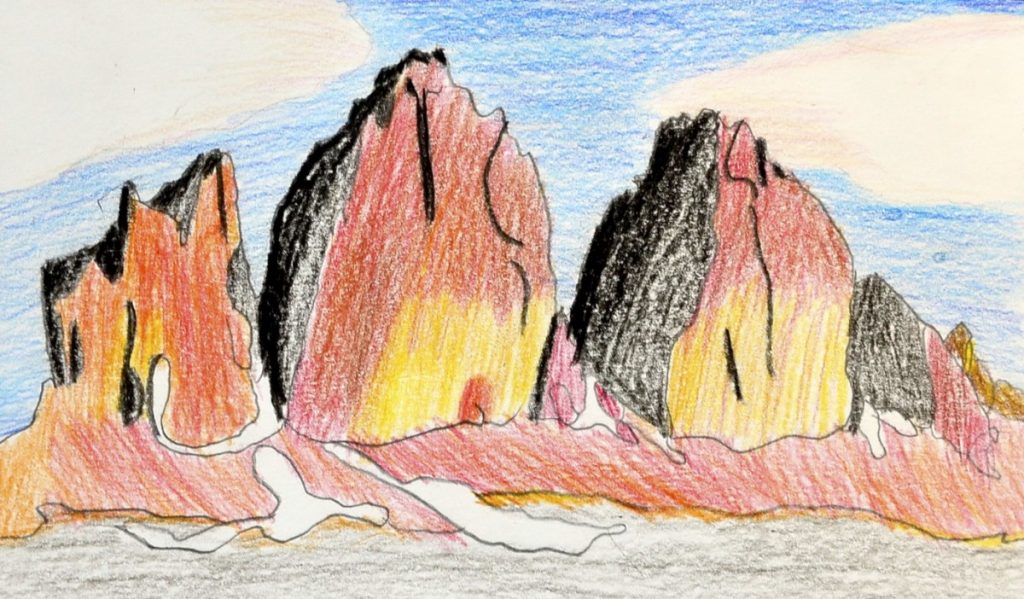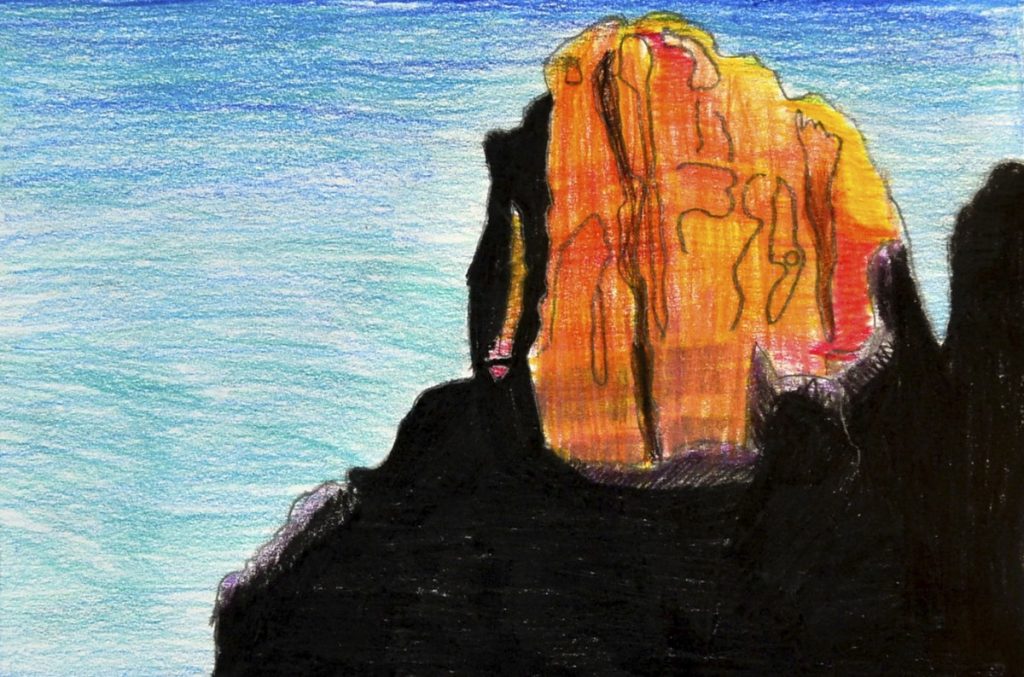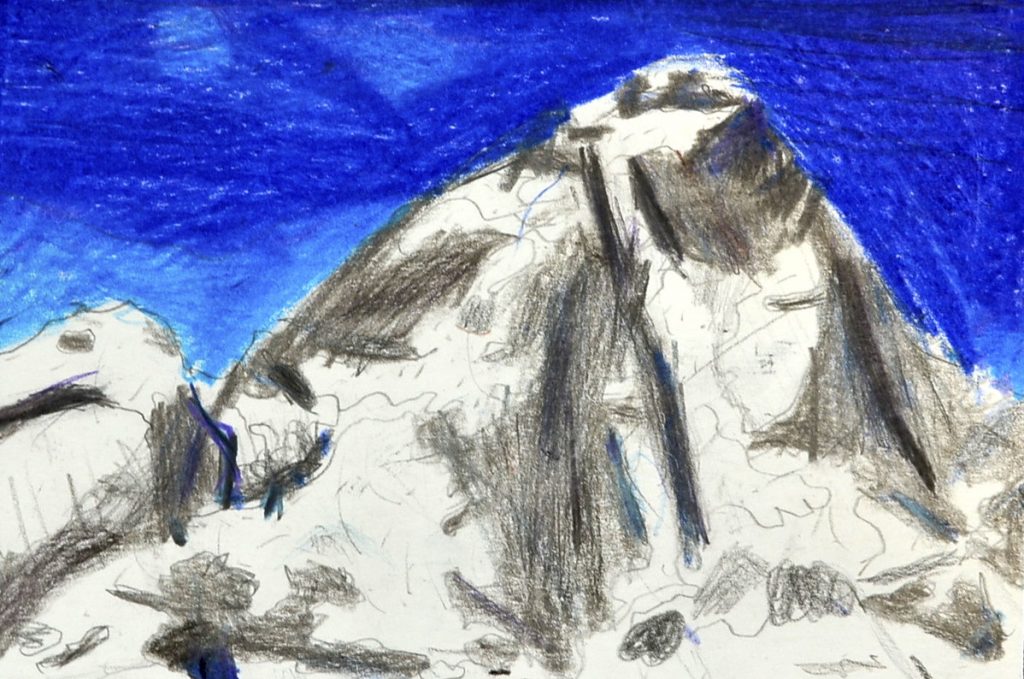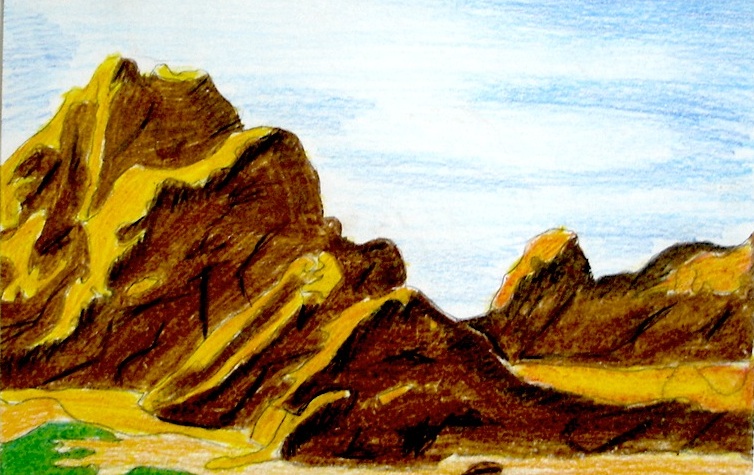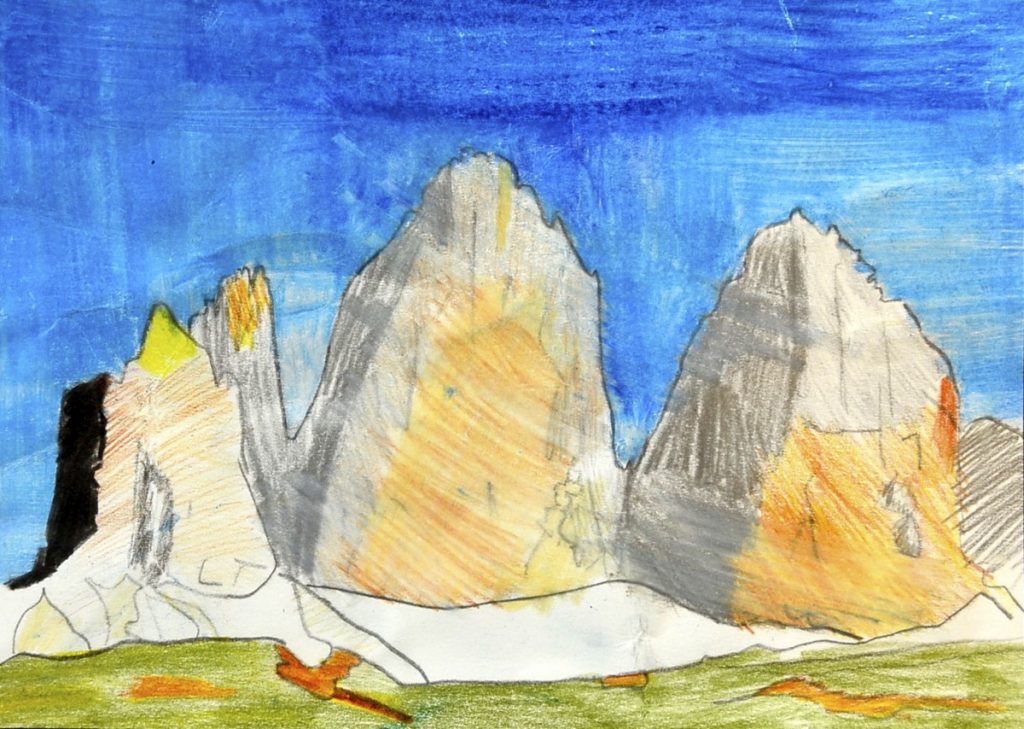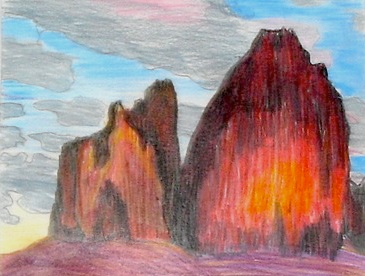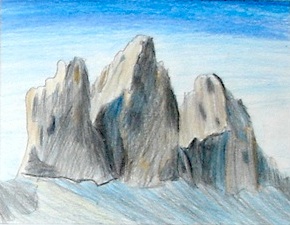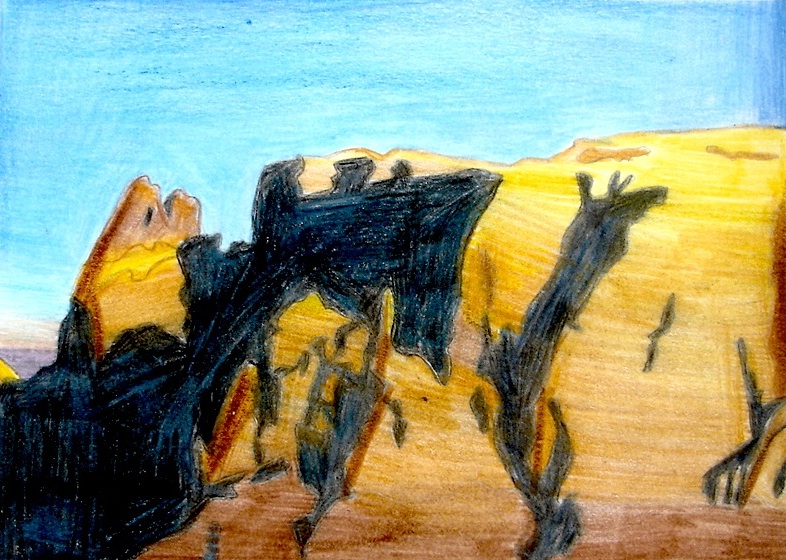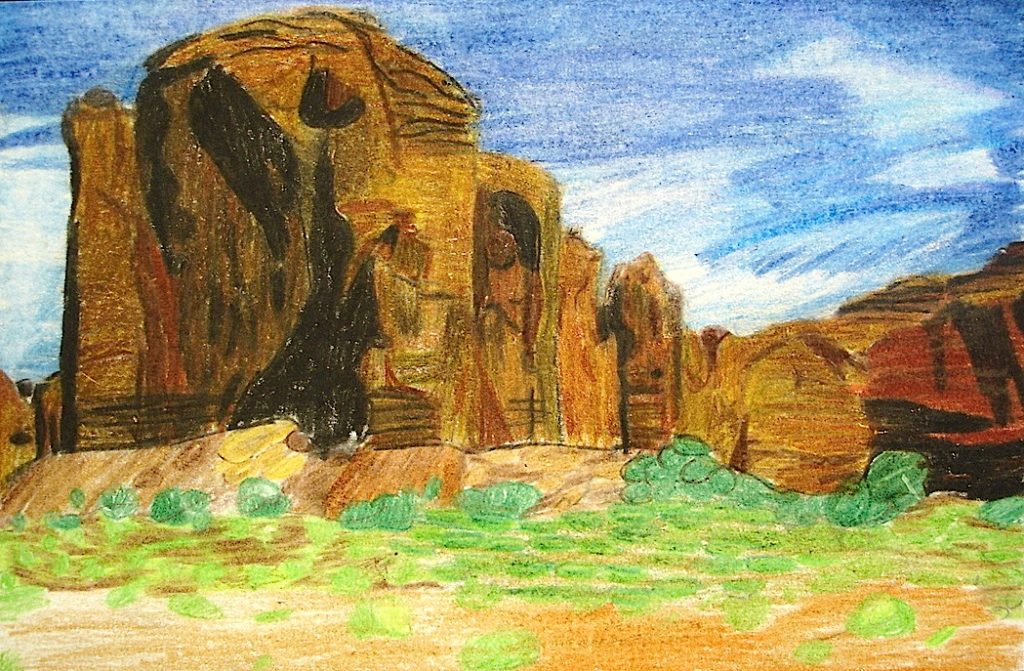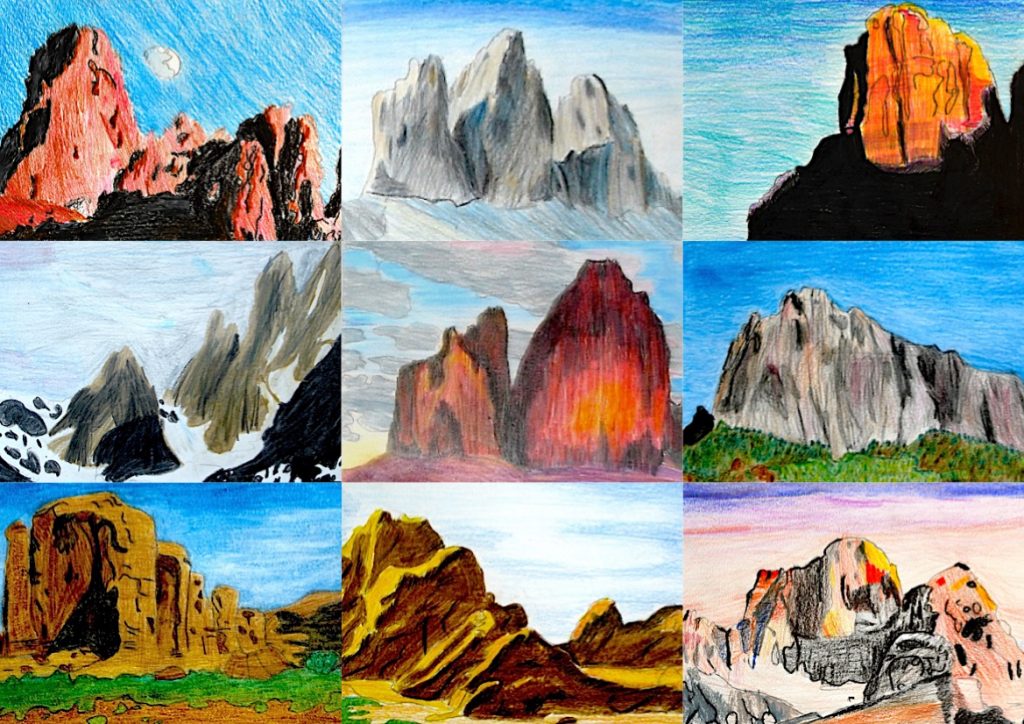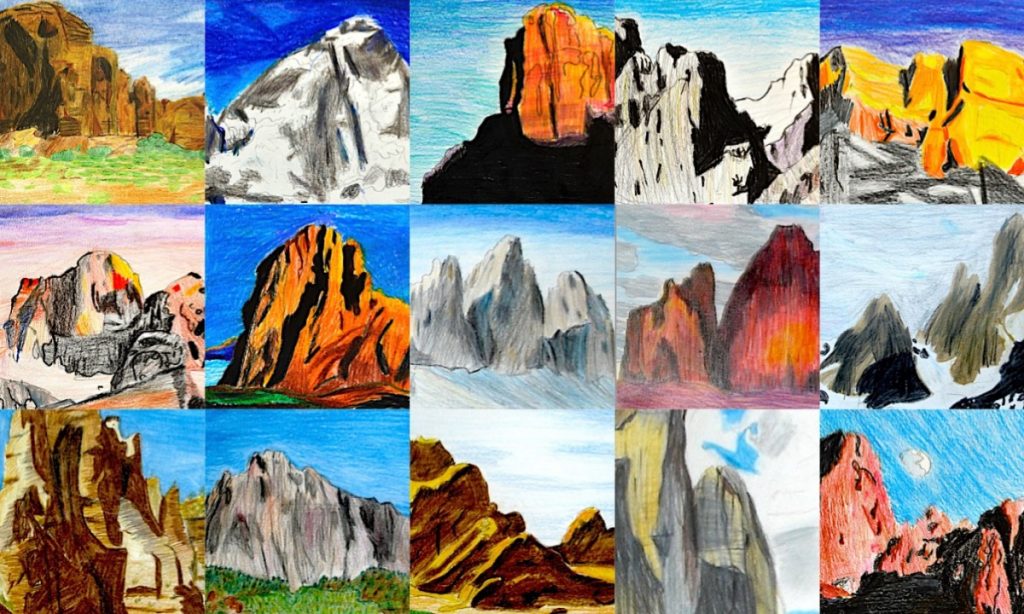
Drawing the mountains trying not to fall into the stereotype of “snow-capped pyramids” is possible only through the observation of reality and the copy from life. The real challenge of the life drawing is focused on the reproduction of reality in its main shapes and in its light and dark colors. To facilitate this work we used postcards-size pictures of the mountain and traced all contour lines of shapes, lights, and shadows on tracing paper.
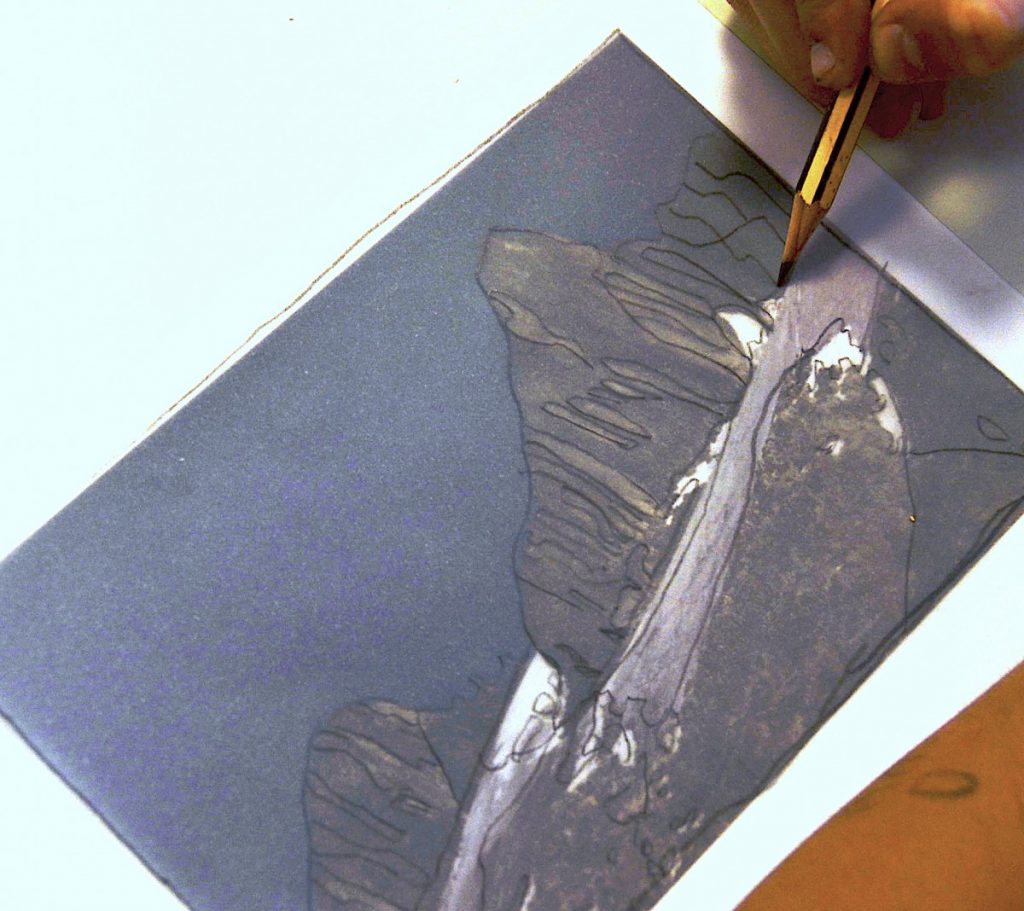
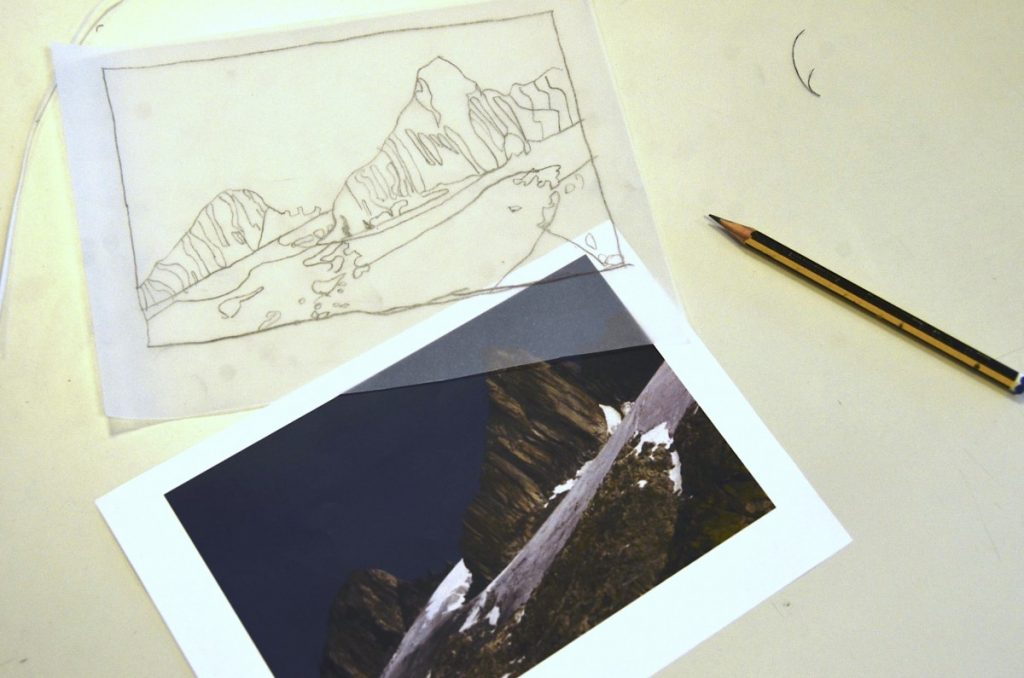
The result is a kind of map filled with strange shapes: once these lines have been copied on the white sheet we color the areas with colored pencils, following the original image as closely as possible. In this step, it occurs a sort of abstraction from the real image because we focus the process of copying on the spots of color and on the imitation of those spots. We copy those colored areas without thinking about what they are but looking at the image only through its visual elements: lines and colors.
Ho chiesto ai ragazzi di concentrare lo sguardo su pochi centimentri quadrati della cartolina per cercare di riprodurre quella specifica zona di colore, cercando di rispettare il più possibile le tonalità chiare e scure (sono quelle che daranno il realismo e la tridimensionalità al nostro disegno!). Suggerisco loro anche di offuscare lo sguardo mentre copiano: quando si trovano in difficoltà per la quantità di particolari da copiare offuscare lo sguardo li aiuta a togliere di mezzo i dettagli e a vedere l’immagine in modo semplificato, solo attraverso macchie chiare e scure.
I asked the students to focus their gaze on a few square centimeters of the postcard and reproduce that specific area of color, trying to respect as much as possible the light and dark shades (they will give realism and three-dimensionality to our drawing). I also suggest them to squint while they copy, in order do obscure the gaze. In fact, when they are in trouble for the big number of details in the original image, they can remove the details obscuring the gaze and seeing the image in a simplified way, only through light and dark spots.
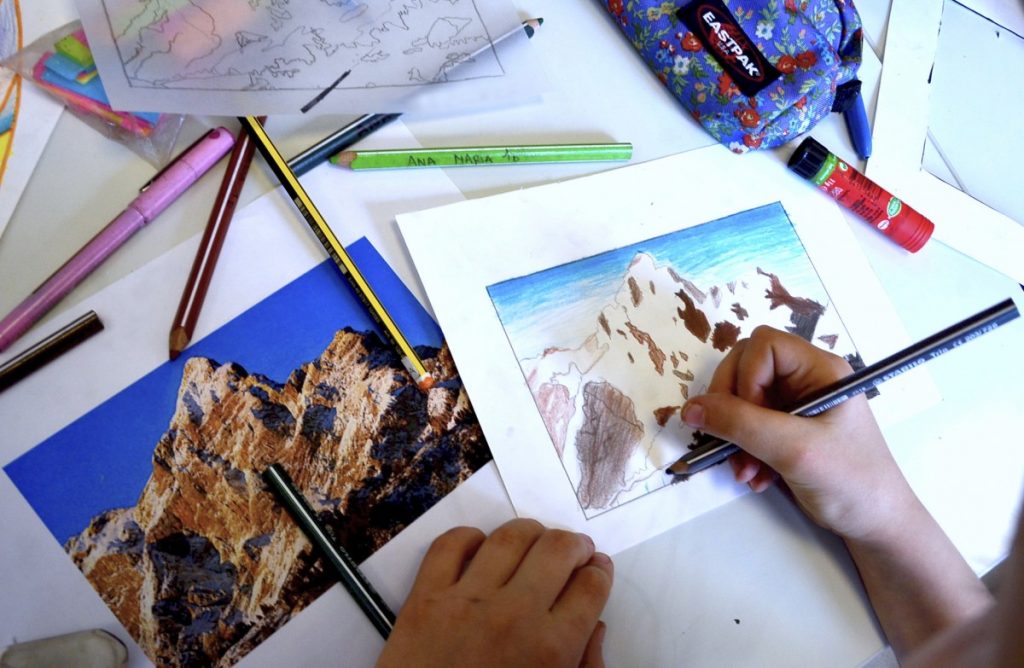
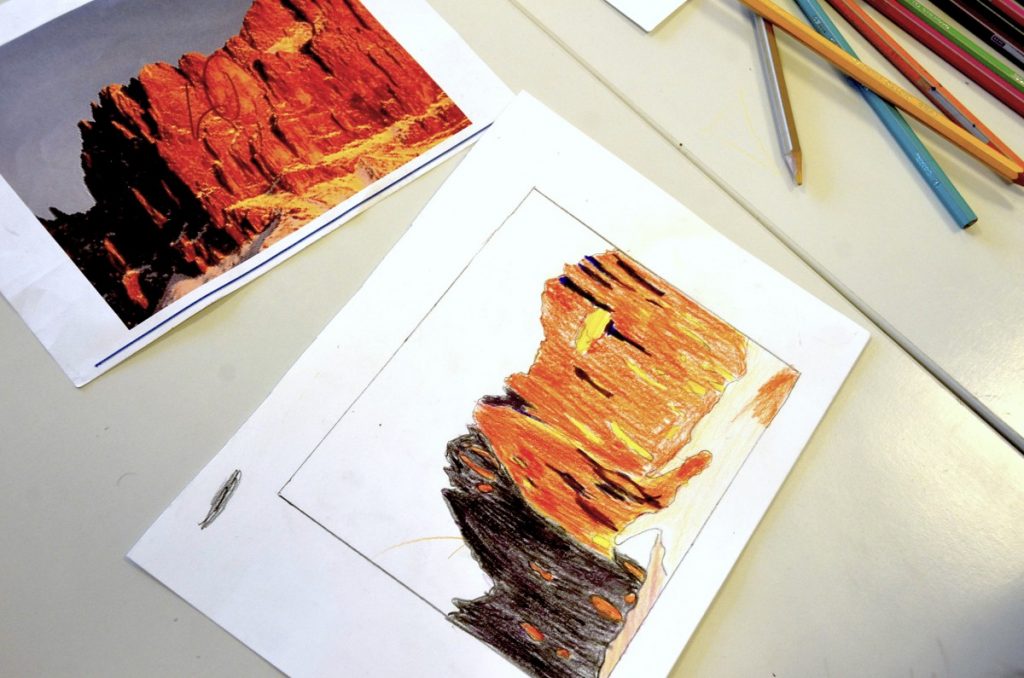
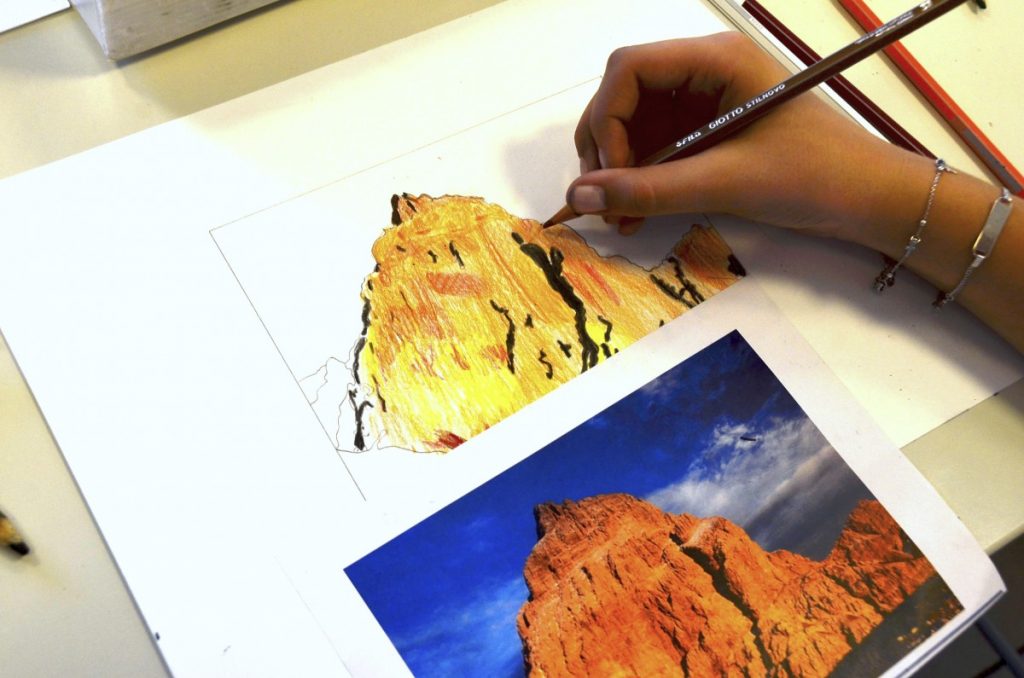
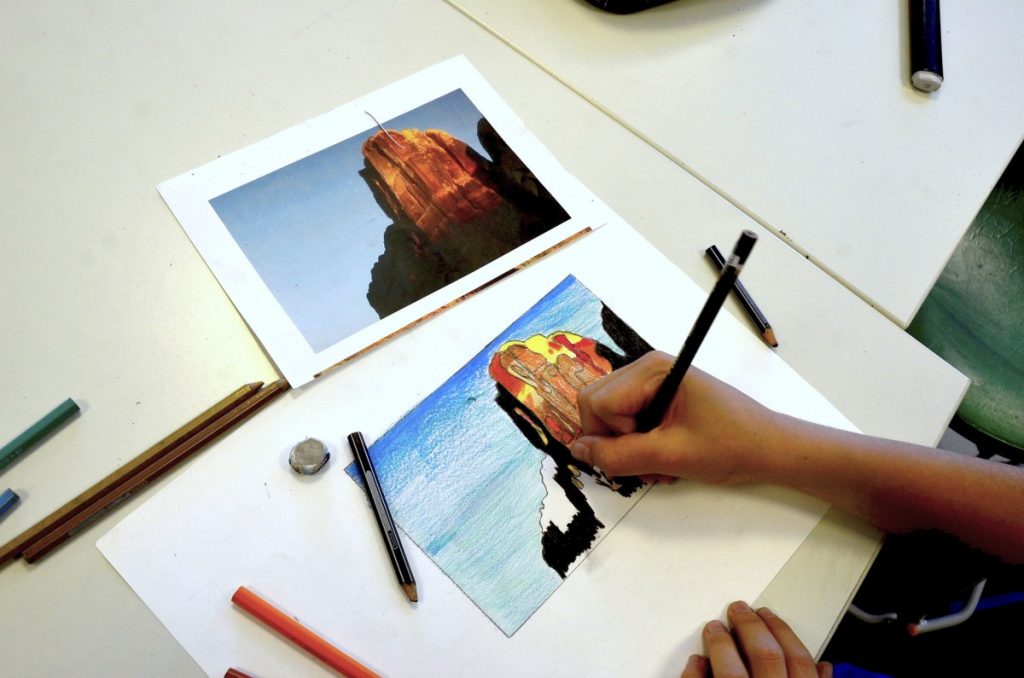
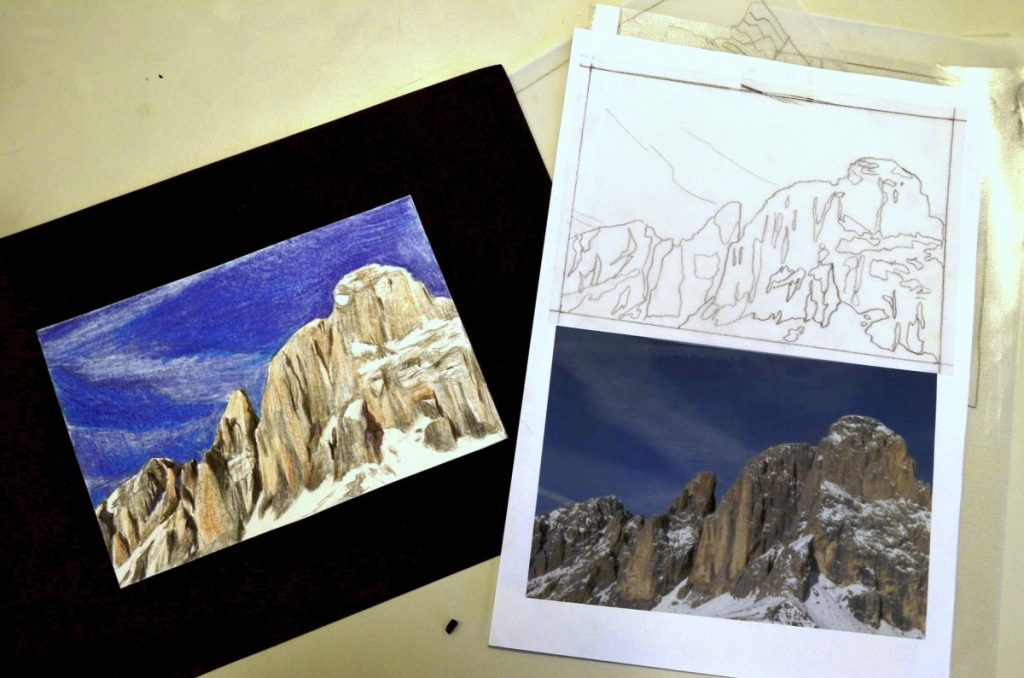
With this work we understood three fundamental aspects of drawing:
- first, everyone can draw;
- secondly, simplifying complicated things is very useful and makes you achieve great results (not only in the drawing but also in life!);
- third, colored pencils are not that trivial and obvious tool, only good for tediously filling out contours, but they are an extraordinary, magical and surprising artistic technique.
